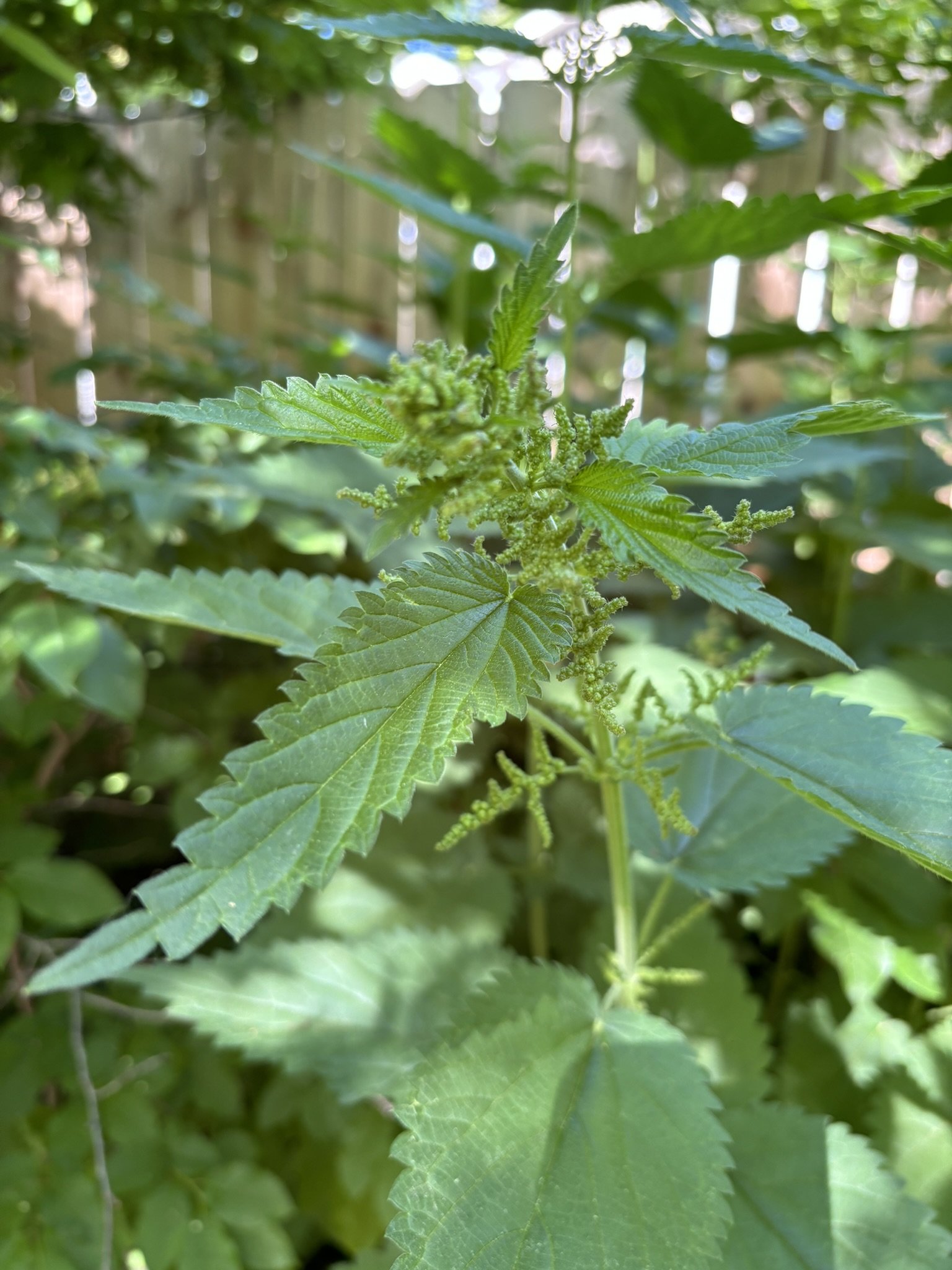Nettles
Latin Name: Urtica dioica
Appearance and Habitat
Nettles are herbaceous perennials that grow in temperate regions across the world, particularly in Europe, North America, and parts of Asia. These plants can grow up to 4-5 feet tall and have jagged, heart-shaped leaves covered with fine stinging hairs, which release urtic acid, which irritates the skin, when touched. Nettles produce small, greenish flowers that bloom from late spring to early fall, forming clusters at the base of the leaves.
Medicinal Uses
Nettles have a long history of use in traditional medicine due to their rich nutritional profile and therapeutic properties. The leaves, stems, and roots are packed with vitamins (A, C, K, and several B vitamins), minerals (iron, calcium, magnesium, potassium), and beneficial compounds such as flavonoids and polyphenols. Nettles are commonly used to treat conditions such as arthritis, allergies, and anemia. They possess anti-inflammatory, diuretic, and antihistamine properties, making them effective for reducing joint pain, managing hay fever, and boosting overall health . Nettles are also used to promote hair growth and improve skin health.
Cultural Significance
In ancient Greek and Roman times, nettles were used to treat a variety of ailments, including coughs, wounds, and digestive issues. In European folklore, nettles were believed to offer protection against evil spirits and were often hung around homes for this purpose. Nettles were also utilized as a fiber plant for making textiles and ropes before the widespread use of cotton.
Magical Uses
Nettles have been revered in magical traditions for their protective, cleansing, and empowering properties. Associated with prosperity, courage, and resilience, nettles are used in rituals to ward off negativity, break hexes, and attract abundance. They are also employed for divination, healing, fertility, and love magic, believed to enhance psychic abilities, promote vitality, aid conception, and ignite passion. Whether carried, burned, or worn, nettles symbolize strength and vitality, offering spiritual support and guidance in times of need.
Contraindications
While nettles are generally safe when used appropriately, they can cause adverse reactions in some individuals. The stinging hairs on fresh nettle plants can cause skin irritation, burning, and itching. When consuming nettle supplements or extracts, it is important to start with a small dose to ensure there are no allergic reactions. Pregnant women are advised to avoid nettle supplements as they may stimulate uterine contractions. Individuals on blood thinners or those with kidney issues should consult a healthcare provider before using nettle products due to their potential diuretic effect .
Oven Baked Nettle Chips
Ingredients:
Fresh nettle leaves (harvested with gloves to avoid stings)
Olive oil or melted coconut oil
Salt and pepper to taste
Optional: other seasonings like garlic powder, onion powder, paprika, or nutritional yeast for added flavor
Instructions:
Preheat your oven to 350°F (175°C) and line a baking sheet with parchment paper.
Rinse the nettle leaves thoroughly under cold water to remove any dirt or debris. Pat them dry with a clean kitchen towel or paper towels.
Using kitchen shears or gloves, carefully remove the nettle leaves from the stems, discarding any tough or woody parts.
In a large bowl, toss the nettle leaves with olive oil or melted coconut oil until they are evenly coated. You can use your hands or a spoon to ensure the leaves are well-covered.
Spread the nettle leaves in a single layer on the prepared baking sheet. Make sure they are not overlapping to ensure even cooking.
Sprinkle the nettle leaves with salt, pepper, and any other seasonings of your choice.
Bake in the preheated oven for 10-15 minutes, or until the nettle leaves are crispy and starting to turn golden brown around the edges. Keep an eye on them to prevent burning.
Once the nettle chips are done, remove them from the oven and let them cool slightly before serving. Enjoy your crispy and nutritious nettle chips as a healthy snack or side dish!
Note: Nettle chips can be stored in an airtight container at room temperature for a few days. Make sure they are completely cooled before storing to maintain their crispiness.
References
Brown, L. The Herbal Guide: Ancient Remedies for Modern Ailments. HarperCollins, 2019.
Jones, M. "Nettles: Nature's Nutrient Powerhouse". Herbal Medicine Today, vol. 29, no. 3, 2022, pp. 145-158.
Anderson, R. Traditional Uses of Nettles. Cambridge Press, 2016.
National Institutes of Health. "Nettle: Health Benefits and Safety." NIH, 2023, NIH.
Herbal Safety. "Nettle: Uses, Benefits, and Risks". Herbal Safety Database, 2022, Herbal Safety.

